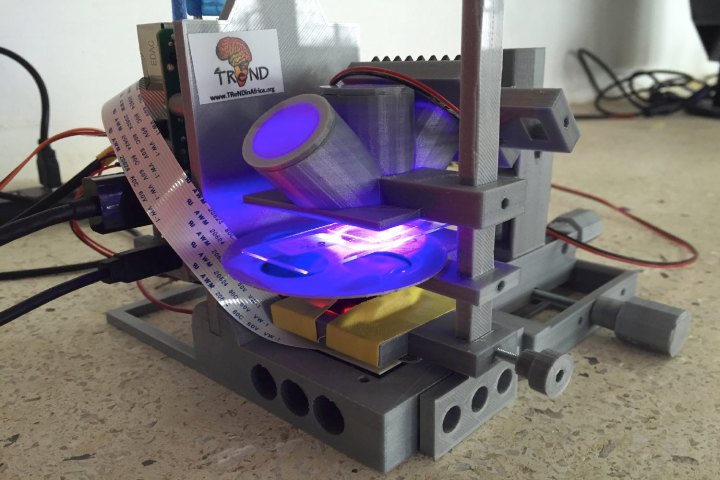
Given that comparable lab equipment can cost thousands of dollars, this device is impressively affordable. Its creators describe it as a complete “neurogenetics lab.”
“It consists of a 3D-printed frame fitted with off-the-shelf electronics, including a camera with powerful zoom objective, and a range of illumination options, as well as circuits for temperature control,” Dr. Tom Baden, a neuroscientist at the U.K.’s University of Sussex, told Digital Trends. “Coupled with colored sheets of plastic as used in theater lighting, the system also allows for some simple forms of fluorescence microscopy.”

Baden — who created FlyPi with André Maia Chagas from the University of Tubingen in Germany — said that the Raspberry Pi-powered creation is linked to advances in protein engineering and genetics that have taken place in the past couple decades. These have allowed for the expression of a wide array of molecular actuators and sensors in specific nerve cells of model species such as fruit flies.
“They may, for example, respond to light, or to heat, in such as way as to change the activity level of the nerve cell they inhabit,” Baden said. “In this way, researchers can study the function and connectivity of these cells in the live, behaving animal simply by shining a light at it or raising its ambient temperature. At this point, all you need is a fairly good camera to film your animals, plus some options to accurately control light and heat. This is what FlyPi was primarily designed for.”
In addition, the 3D-printed microscope can be used as a low-cost fluorescence microscope for tasks like spotting parasites in tissue samples or identifying types of white blood cells.
Although the project is still in its early stages, if you’re interested in receiving updates about development (and maybe even eventually getting one for purchase) you can do so at this website. You can also check out a research paper on the project here.
Editors' Recommendations
- Nvidia turns simple text prompts into game-ready 3D models
- AMD is bringing 3D V-Cache back to Ryzen 7000 — but there’s a twist
- AMD’s revolutionary 3D V-Cache chip could launch very soon
- Fighting football injuries with 3D-printed, hyper-personalized pads
- AMD’s 3D-stacked Ryzen 7 5800X3D is ‘world’s fastest gaming processor’


